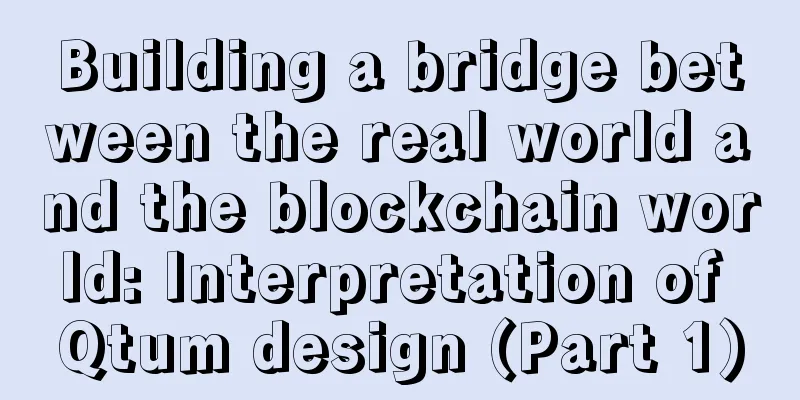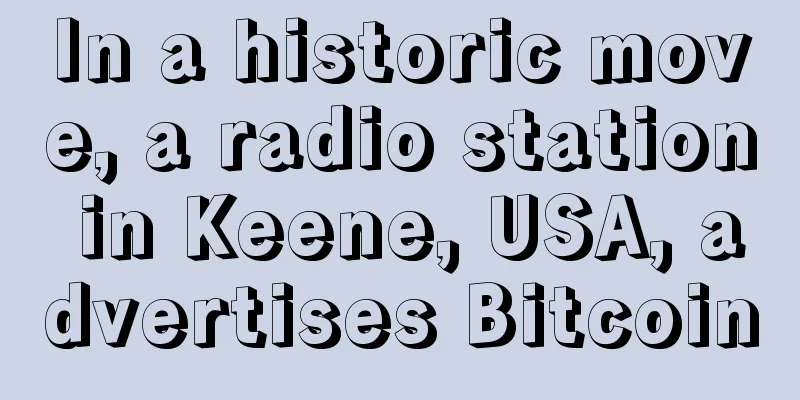|
Not long ago, the Qtum open source community published the white paper "Quantum Chain White Paper - Value Transfer Protocol and Decentralized Application Platform". The Qtum open source community has been committed to developing a third blockchain ecosystem besides Bitcoin and Ethereum, and is committed to expanding the application and technical boundaries of blockchain technology so that ordinary Internet users can feel the value of blockchain technology. After the white paper was released, it sparked discussion in the community, and many users had questions about what exactly is the Quantum Chain. Recently, I had the opportunity to communicate with the development team of the Quantum Chain and discussed the design ideas of the Quantum Chain with the development team. The following is the content of the interview: 8btc: Can you briefly introduce what is Quantum Chain and why you want to develop Quantum Chain? A: In our white paper, we define Qtum as a value transfer protocol and decentralized application development platform. There is a reason for this definition. We know that the Bitcoin network is the first successful electronic cash system on the Internet. From this perspective, the Bitcoin network is the first distributed value transfer protocol on the Internet. In the Qtum development team, we have upgraded this to the Value Transfer Protocol (VTP protocol) . So first of all, the Qtum network is committed to building a new distributed, consensus-based value transfer protocol on the existing Internet. The types of assets that can be transferred include tokens built into the blockchain, securities issued on the blockchain (stocks, bonds, points, various digital assets based on collateral, etc.), and a point-to-point value transfer protocol makes the transfer of these blockchain assets possible. In fact, in the Bitcoin network designed by Satoshi Nakamoto, only a set of peer-to-peer electronic cash system was implemented. In the emails between Satoshi Nakamoto and Wei Dai, we can find that the assumptions about contracts proposed by Wei Dai in the B-money paper are not common in the Bitcoin network (scripting language to implement simple contract functions). In the subsequent email exchanges with Wei Dai, it was found that his interest shifted from cryptocurrency and the crypto community to the field of AI, and he did not continue his research on distributed system contracts. The emergence of the ethereum network in 2014 has expanded the boundaries of blockchain technology. The concept of smart contracts it brought has greatly promoted the implementation of blockchain technology and expanded the application scenarios of blockchain technology. Based on Turing-complete languages, we can write many smart contracts with more complex business logic, as well as decentralized applications based on distributed systems. Different from the current POW design of Bitcoin and Ethereum, the Qtum development team will adopt IPOS (Incentive Proof of Stake) mechanism as the consensus mechanism of the blockchain network and build decentralized applications on it.
8btc: What is the positioning of the Quantum Chain project? Will it be an open source project? Is there any difference between it and existing open source projects? A: The positioning of Qtum is to be the first blockchain decentralized application development platform that complies with industry regulation . In order to comply with future industry regulation, the Qtum team designed many options for the role of regulators during the design process, such as (1) introducing digital identity and third-party credit reporting platforms in Qtum. Third-party service providers can mark the identities of Qtum participants through smart contracts, thereby providing Verified Qtum Address and UnVerified Qtum Address. Verified Address will be used preferentially by financial service DAPPs based on Qtum. (2) In addition to "smart contracts", we also designed a new type of contract in Qtum, which we call Master Contract. The execution logic of the master contract can be executed off-chain, introducing the role of regulators to avoid the tragedy of DAO from happening again. (3) Regulators can serve as providers of metaphors and data sources (Oracle and data feed) in the Qtum system. For example, if the execution result of a contract depends on the GDP growth rate of the quarter, then regulators can serve as providers of trusted data. The Qtum blockchain will be a completely open source project, including all code and development design documents, which will be open source after the Qtum project is officially released. Currently, all Qtum development is hosted on Github. Since March 1, 2016, it has been under efficient development for nearly 6 months. Foreign countries have conducted a lot of exploration in blockchain technology, and the community also has a lot of projects, from BitCoin, Ethereum, BitShare, NxtCoin, PeerCoin, etc., all of which have made great innovations in certain technologies. There are also some blockchain projects in China in terms of digital equity and digital assets, but they are still relatively weak in terms of technological innovation. The Qtum team hopes to carry out technological innovation and application innovation from multiple angles, and work with domestic and foreign peers to help the application of blockchain technology.
8btc: What new concepts and technological innovations have been proposed by the Quantum Chain development team, and what impact do these technological innovations have on the blockchain industry? A: Within the Qtum development team, we have a lot of discussions, and we think and practice every day about how to make the value of blockchain technology accessible to ordinary Internet users. We will gradually share the results of many of our thoughts with everyone. In addition, we also know that we cannot innovate for the sake of innovation, but innovation must conform to the inherent business logic. We proposed the following innovations in the Qtum white paper: Value Transfer Protocol (VTP): From the development history of Internet technology, the emergence of VTP protocol is historically inevitable, and Satoshi Nakamoto is the person who accelerated this historical process.
Compatibility between Bitcoin and Ethereum: Bitcoin and Ethereum are the two largest ecosystems of blockchain technology. Maintaining a certain degree of ecological compatibility will help the development of Qtum. From a technical perspective, Qtum will build state accounts based on the UTXO model and will first be compatible with the EVM virtual machine (EVM/EVM2.0). Pluggable consensus mechanism: The Qtum system includes the Qtum public chain and the Qtum alliance chain. Due to the differences in network environment and participants, and considering the degree of decentralization, participation threshold, security and reliability of the public chain, we will use the IPOS mechanism proposed by the Qtum team based on the POS mechanism in the public chain network. Because most participants in the alliance chain are restricted nodes and counterparties with known identities, the consideration of the consensus mechanism is different from that of the public chain network. In the alliance chain, we will adopt a consensus protocol that combines Proof of Time and Raft to achieve a high-speed blockchain consensus network. Master Contract: The Qtum development team first proposed the concept of a master contract. The concept of smart contracts has given people a certain illusion. In the Qtum system, we divide BlockChain Contract into Smart Contract and Master Contract. The master contract can realize the execution process of the contract only between the counterparties by introducing off-chain factors. The final transaction is executed on the entire network, which enriches the connotation and application scenarios of blockchain contracts and expands the concept of smart contracts. Contract Ledger: We have also proposed the concept of a contract ledger. The Bitcoin network only contains one Transaction Ledger. In the Qtum system, in addition to the Transaction Ledger, we will also build a Contract Ledger, which will help everyone read and trace all contract contents more clearly. Contract Readability: The contract ledger will store all contract codes and contract intent in plain text, in addition to byte code, providing a more readable form of contract presentation. Identity design of public chain: In the current public chain network, it is rare to see the design of digital identity of participants. In Qtum, we will develop this part. Design of Oracle and Data Feed: Through the Oracle and Data Feed in the Qtum system, real-world data can be used as contract trigger conditions, breaking the closed nature of the smart contract itself. Go Mobile's strategy: In the Qtum system, we will focus on developing mobile services, including mobile wallets and mobile DAPP services, to support mobile applications in different industries. Many of the concepts proposed are the first to appear in the entire blockchain industry. I believe that the implementation of these concepts and technologies will push blockchain technology from theory to application faster.
8btc: It seems that Quantum Chain has a lot of things to develop. Is there an overall architecture diagram? Answer: I have drawn an architecture diagram before, which is not very good. It is for your reference. The development team will also provide an improved version of the Qtum system architecture later. In the architecture, we can see that Qtum includes many modules: from mathematical models, system engineering, software engineering, API design, industry applications, UI and interaction, to testing strategies and quality control, and deployment models, etc., including the main modules of the Qtum system. We will gradually expand on the specific design and functions of each module in the following interpretation.
8btc: How is the development of Quantum Chain going at the moment? Are there any industry partners interested? A: Quantum Chain completed the release of the internal test network last week, and has made phased progress and breakthroughs in development. Since March 2016, the development team of Quantum Chain has been working on high-speed development. The team has dozens of members, most of whom are from domestic and foreign Internet companies, including Baidu, Tencent, Alibaba, etc. In terms of industry partners, we have also contacted many industry partners at home and abroad, including Internet companies, Internet of Things companies, supply chains, social and game industries. The Quantum Chain development team will work with industry partners to build a blockchain ecosystem.
This article is the first in a series of reports on the design of Qtum. Please stay tuned for the follow-up interview: Building a bridge between the real world and the blockchain world - Qtum design interpretation (Part 2). If you have any questions about Qtum, please raise them in the discussion area. Welcome to communicate! For more information about Qtum: [email protected] Download the Qtum white paper: http://www.8btc.com/qtum-white-paper
| 









